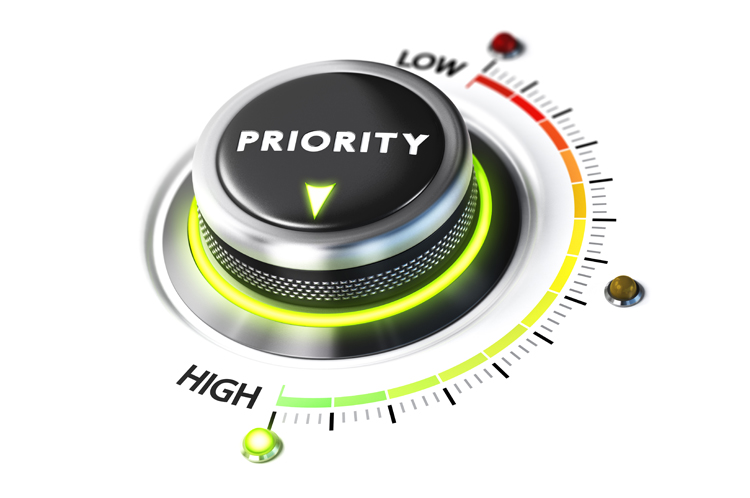You cannot manage what you do not measure.

Courtesy of Adobe Stock
That’s one of my favorite management adages of all time. It captures a timeless truth in a simple sentence that can be grasped by all who are willing to take heed.
Too many managers I’ve come across prefer to use a style of management that I call “hope management.” They hope things work out. They hope things turn out the way they want them to. When they don’t, they’re often not even fully aware of it because when you’re not measuring it’s very difficult to tell, with any degree of certainty, whether things are actually getting better or worse.
Additionally, if things are getting better or worse, do you know by how much? Do you understand why you’re experiencing improvements or degradations? If not, you’re not really managing, you’re hoping.
Measuring gives you an opportunity to affect the outcomes you or your team are generating. Because you know whether you are gaining or losing, you can make adjustments to the “recipe” and then gauge what impact your adjustments have produced, positive or negative.
That’s real management.
Let’s look at four aspects of measurement that are critical to your ongoing, long-term success.
What to Consider When Measuring
1. Use a balanced approach of measurement. One of the biggest mistakes I come across is companies that are relying solely, or much too heavily, on the income statement to assess the health or success of the business. Unfortunately, this leaves you with plenty of blind spots and things can change drastically without anyone seeing it coming.
In the mid-90’s professors from the Harvard Business School came up with the Balanced Scorecard concept. It has taught us the importance of looking at the company from four equally important perspectives:
• Financial
• Customer/Stakeholder relationships
• Internal business processes (your operations)
• Learning and Growth (your people)
What’s critical to understand about this is that the last three categories have a direct impact on the financial results. But, if all you ever look at is the monthly or quarterly financial results, you’re going to miss the train that’s coming down the track.
This balanced approach allows you to see cracks in the armor before they become financially fatal. This puts you in the driver’s seat to manage these critical business aspects so that they produce a positive return on your investment.
2. Measure certain items weekly. If you wait until the end of the month to look at all of your measures, you’re going to find that you’re often “too late to the party.” However, if you’re reviewing the team’s performance on select items on a weekly basis it gives you the ability to make decisions proactively that can change the end outcome for the month.
For example, if you have a monthly revenue goal and review it weekly, and find that after week #2 things are off track, you still have two weeks to work with your sales team to effect a successful outcome.
Another measure that I recommend tracking on a weekly basis is your cash balance/forecast. There is no more important measure for a CEO or small business owner than this.

Courtesy of Adobe Stock
3. Measure what matters most. It’s important that you understand the key economic levers or drivers within your organization. You can’t measure everything so you need to measure the things that have the biggest impact – on your people, your processes, your customers, and your finances.
For this it is critical that you and others on your team have a thorough understanding of what those key drivers are and how they impact the bottom line. For example, I once knew a Sales Manager who commented that if his team made 100 sales contacts per day, they’d hit their monthly revenue goal almost every time.
As another example, one of my clients knows pretty clearly what labor percentage his crews need to be at (as a percentage of sales) in order for them to hit their desired net profit levels.
What customer, process, or employee-related measures have the most direct, positive impact on your profit, cash flow, and balance sheet?
4. Don’t neglect cash flow and the balance sheet. Cash is king, as they say. But, too many companies are blind to what their cash looks like today, much less have a forecast of what it will look like a week or more from now. That could be a fatal mistake. There have been companies that have gone out of business even though their sales have been at record-breaking levels, because they weren’t watching their cash.
Additionally, many companies completely ignore the balance sheet. While the income statement gives you incredibly important information, the balance sheet gives you insights into critical financial aspects of the company that the income statement cannot, such as liquidity – i.e. a measure of how quickly you would be able to convert your assets to cash.
The balance sheet will tell you whether or not the current assets of the business are sufficient to cover the current liabilities and whether or not you are relying too heavily upon debt to run the organization. It also gives you important information about your cash cycle – i.e. how long it takes, on average, to collect payment on your invoices.
"If you’re not measuring, you’re not managing, you’re hoping." - Joe Denner
Final Thought
One last thought as you think about how to measure your business. Don’t bite off more than you can chew. It’s easy to get overzealous when it comes to measuring, so as you turn your sights to this all-important aspect of your business you need to apply the KISS principle – keep it seriously simple.
Start by asking yourself what three, non-financial measures have the biggest impact on your bottom line. Once you have your arms around that, you can begin expanding to a larger scorecard.
Question: What is the most important non-financial metric for your business? Share your answer below in the Comments Section.